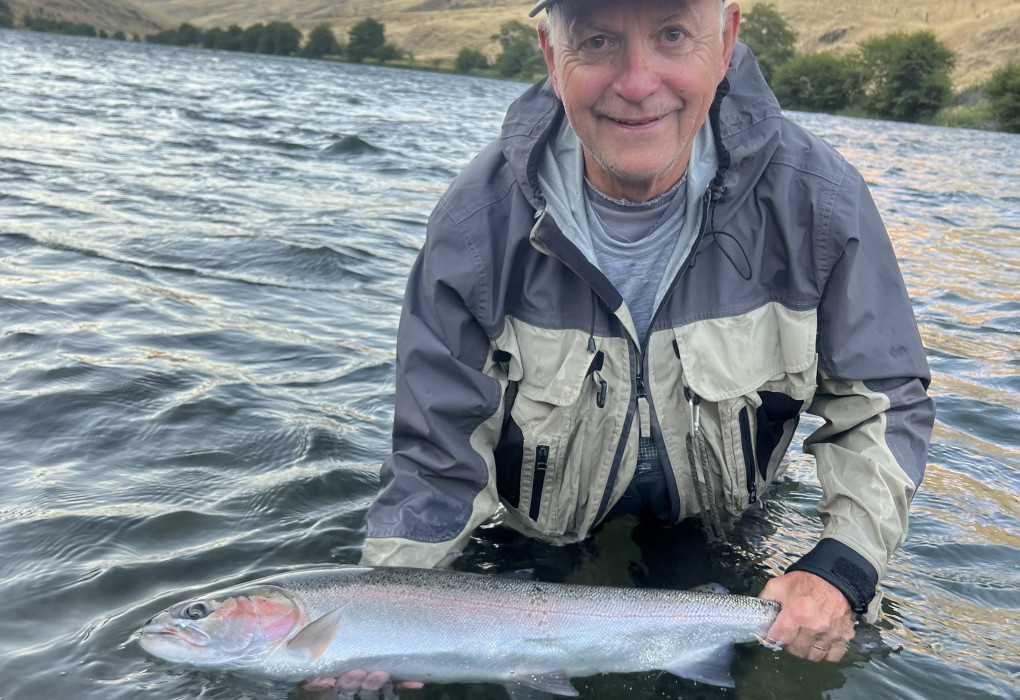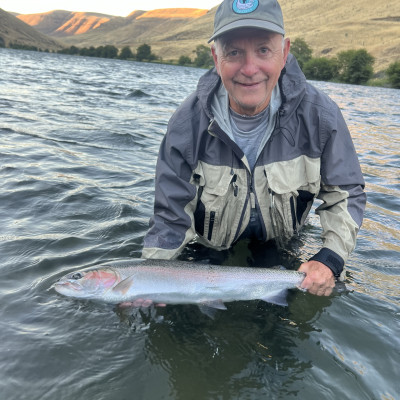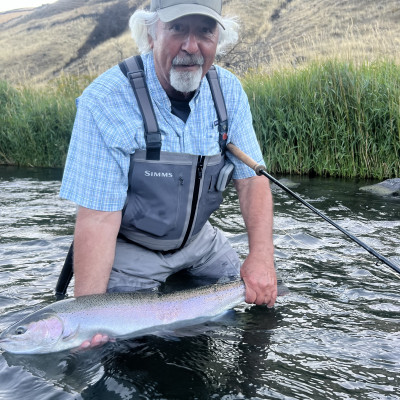Deschutes Diaries: December 2024 - Bet On Wild
 NFS Supporter Brian Oliver with a wild Deschutes summer steelhead in August 2024 | Photo: Curtis Ciszek
NFS Supporter Brian Oliver with a wild Deschutes summer steelhead in August 2024 | Photo: Curtis Ciszek
Deschutes Diaries - Bet On Wild
Exploring Steelhead Trends and Angler Impacts on the Lower Deschutes
December 2024
Welcome back to the Deschutes Diaries! In this series, we delve into the dynamics of the Deschutes River, examining its past, present, and future challenges. In this issue, we explore new findings on wild steelhead in the lower Deschutes.
Through these articles, we’ll take a closer look at the events that shaped the Deschutes River we know today, and highlight Native Fish Society's efforts to protect and revive its wild abundance.
This is Part 2 of an ongoing series to showcase and open the conversation of our Deschutes: Return to Wild & Cool campaign. Along the way, we’ll be sharing important milestones, ongoing efforts, and how you can be a part of this vital work. Additional parts and updates will be posted over the next several months. Stay tuned!
~~~~~~~~~~~~~
Did you fish for steelhead in the lower Deschutes this past summer? If you had any luck, were the fish you caught wild or hatchery? The smart money says any steelhead you landed in the Deschutes were wild.
A recently published study by ODFW fish biologists, led by lower Deschutes District Fish Biologist Jason Seals, found that wild steelhead are disproportionately caught in the recreational fishery in the lower Deschutes compared to hatchery fish.
Seals and colleagues analyzed creel data from Heritage Landing and Macks Canyon from 2000-2019 and 2021 to determine the proportion of wild vs hatchery steelhead caught by anglers in the lower Deschutes. They then compared the creel data to counts of wild vs hatchery fish at Sherars Falls and the Dalles and John Day dams to understand how the catch rates of wild vs hatchery fish aligned with their proportions in the river.
The key findings of this work were:
Wild steelhead are much more likely to be caught than hatchery fish. Even though wild steelhead comprised only about 30% of the overall fish population, they made up about 65% of landed fish.
The earlier portion (July-August) of the run in the lower Deschutes has a higher proportion of wild fish. Hatchery fish become more prevalent in September and later.
Angler effort is actually concentrated during times when there are more hatchery fish present (from September on).
Even though many anglers (60-75%) who catch hatchery steelhead retain them, this doesn’t change the run composition all that much, so it does not account for the difference in the dominance of wild fish caught.
The results of this study have some important implications for the management of the recreational steelhead fishery in the lower Deschutes, as well as supporting some best practices for everyday anglers to adopt:
While it’s generally estimated that about 95% of steelhead survive being angled in a catch-and-release fishery, these effects are cumulative. Meaning that the likelihood of a fish surviving multiple captures can quickly decrease. Using creel data from 2021, every wild fish in that year’s run was caught (on average) more than once, despite the shortened fishery. But some individual fish were likely caught 3-4 times while others weren’t caught at all.
Fisheries managers should take into account the higher angling pressure experienced by wild fish, particularly when run sizes are low and water temperatures are high.
Anglers should consider limiting themselves to catching just one or two steelhead a day. While the excitement of doing numbers can be tempting when the fishing is hot, this increased effort can result in more wild fish being caught multiple times–with a corresponding decrease in survival and/or spawning success.
This study was only possible through the existence of solid creel data. Very few rivers have this kind of data available, and the study authors noted that the adoption of eCreel monitoring that only requires anglers to log hatchery catch would miss the larger catch-and-release impact that wild fish experience. Anglers can make a difference by advocating for the adoption of eCreel requirements that all anadromous fish encounters (including catch-and-release) be recorded. This would allow similar studies and better management of salmon and steelhead fisheries across the state.
In understanding the challenges facing wild steelhead in the lower Deschutes, it’s clear how important responsible angling and informed management are to their survival and revival. Whether it’s adopting sustainable fishing practices or advocating for better data collection, every effort counts toward preserving the resilience of this iconic species. Together, we can bet on wild and make a difference!
~~~~~~~~~~~~~
This is Part 2 of an ongoing series. Stay tuned for next month's topic!
If you have any questions or topics you'd love to see covered in Deschutes Diaries, please don’t hesitate to reach out – we’d love to hear from you! Send us an email with your questions and suggestions at info@nativefishsociety.org
Want to stay updated on Deschutes topics? Sign up here:
Sources:
Seals, T. J., Jones, M., Tattam, I. A., & Henderson, J. S. (2024). Differential relative catchability of wild‐and hatchery‐origin steelhead in the Deschutes River, Oregon. North American Journal of Fisheries Management. doi.org/10.1002/nafm.11034.

